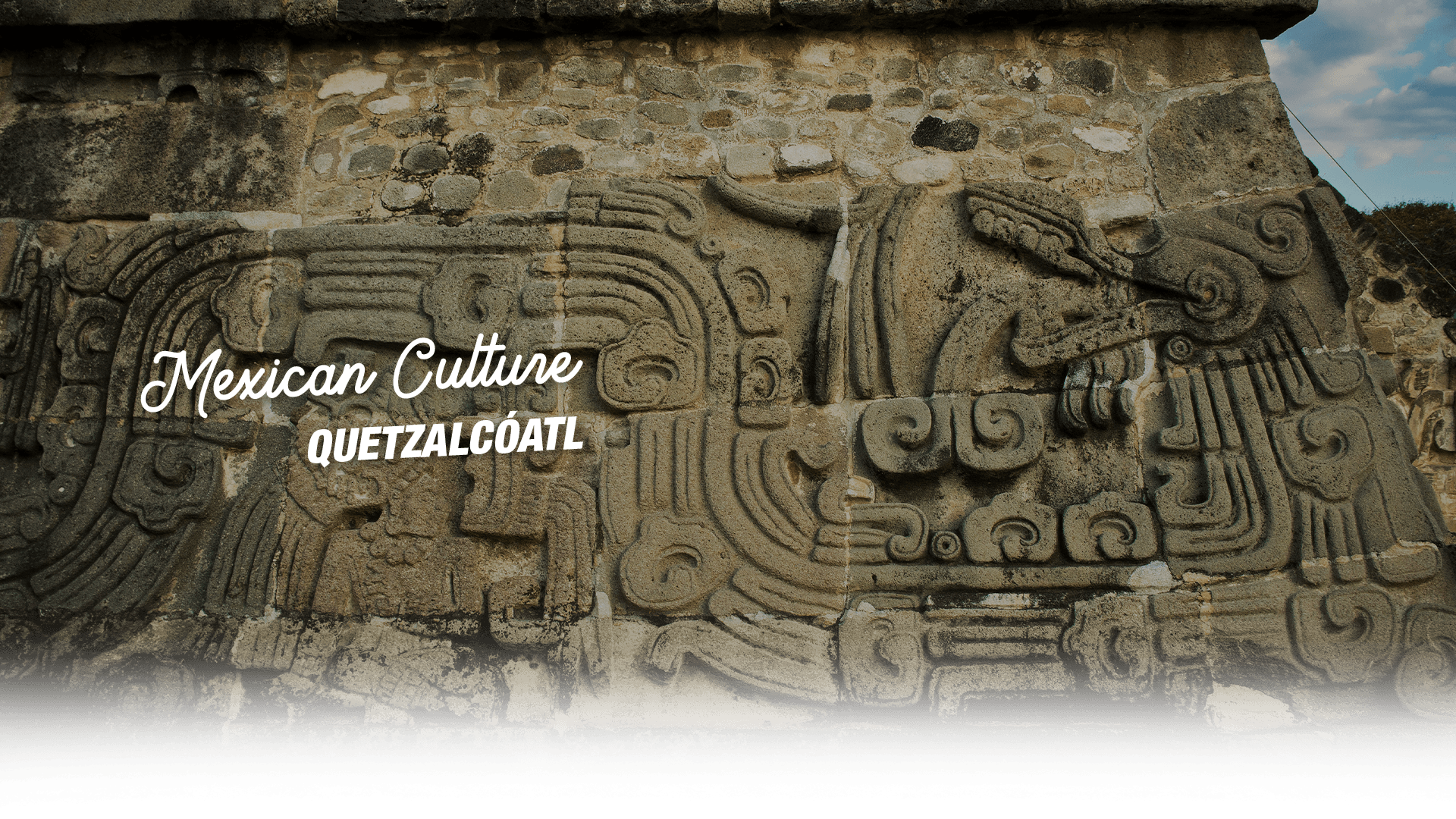
Mexican Culture
LEGEND OF QUETZALCÓATL
Quetzalcoatl, one of the main deities of pre-Hispanic civilizations, is present in most of 15th-century Mesoamerica. From the beginning, he has been attributed countless mysteries: he is considered a man, a deity, a priest, a myth or a legend.
The origin of his name comes from the Nahuatl and means “Quetzal”: a bird of beautiful plumage and “Coatl”, which means snake, resulting in what is commonly known as “the Plumed Serpent.” This deity was one of the most popular in Hispanic tradition and refers to the union of terrestrial and rain waters, which, among agricultural peoples, was essential for their survival, thus signifying the origin of life itself.
Legend has it that when the creation of the world was finished, the gods and humans lived in harmony, everyone was happy, except for the god Quetzalcoatl, who observed in anger as humans were subjugated by the other gods. So he decided to adopt the human condition to share the knowledge and art that the deities possessed.
Upon his arrival in the world of the humans, he wandered through many lands until he came upon Tollan, a place that is said to be located today within the State of Hidalgo, in Mexico.
When he arrived, they were offering a sacrifice in honor of his brother, Tezcatlipoca, and, angered by this barbarity, Quetzalcoatl halted the execution. The priest who performed the sacrifice shouted angrily and the sky turned gray with clouds that heralded a major storm with lightning and thunder.
Quetzalcoatl calmed them and assured them that while he was in the city, Tollan would flourish like no other. He then raised his hands to the sky and the winds began to blow, clearing away the clouds. From that moment on, men wanted to worship him as a deity, but he rejected any kind of luxury and invited to them live with humility and to learn with purity of soul.
From then on, Tollan grew and prospered. The god in human form taught them to cultivate corn seeds, to work with jade, gold and obsidian, how to dye cotton, the art of astronomy, he enriched their writing, promoted the worship of the gods and forbade human sacrifices, teaching them self-sacrifice by pricking themselves with maguey thorns instead.
He created an order of maidens dedicated to the cleaning and maintenance of the temples. In short, the city became a grand, beautiful and sacred city.
But Quetzalcoatl’s brother, the god Tezcatlipoca, was not happy with his relative’s performance, so he devised an evil plan to destroy his image. One day, Tezcatlipoca disguised himself as an old man and brought a gift to Quetzalcoatl, who received it with great joy and humility, realizing that it was a maguey that brought forth a delicious liquid.
However, what Quetzalcoatl didn’t know was that the delicious liquid was “octli“ or “pulque“, an intoxicating drink which had yet to be discovered.
Quetzalcoatl drank it with pleasure; he drank and sang like never before. He was so ecstatic that, being filled with carnal desires, he took as his woman Quetzalpetatl, a priestess belonging to his cult, thus breaking his celibacy.
The next morning he felt utterly unclean and made the hardest decision of his life, for he was no longer worthy to lead Tollan. He headed for the sea, built a boat out of snakes and sailed toward the setting sun, promising the Toltecs to return to Tollan in the year “Ce Acatl“ to avenge for the betrayal. Coincidentally, that same pre-Hispanic year was the year 1519 AD, the year when the first Spaniards arrived on the very coast by which Quetzalcoatl disappeared.
On the other hand, according to some historians, the representations of Quetzalcoatl depict him as a tall and bearded white male. That’s why it is assured that this notable personage may have been, in fact, genuine: a Viking who reached the shores of the Gulf of Mexico to later become the god of the Toltecs, because of all the new knowledge that he instilled.
The most remarkable thing about this story is that it was precisely because of these physical characteristics and the golden glow of his armor and clothing, that the Spanish conquistador, Hernan Cortes, was mistaken for this god.
The dates coincided, as well as the omens promised by the magicians and Aztec priests, so that an entire civilization, believing in these prophecies, immediately thought of the return of Quetzalcoatl. Unfortunately, they realized too late that this god was nothing more than a man who came in search of gold and who was willing to end entirely with a great civilization.
The great Quetzalcoatl is remembered, therefore, as an exemplary governor and politician, a civilizing hero; as the inventor of the calendar, the discoverer of corn, a master farmer, the inventor of the art of smelting metals, a precious stone carver, judge and jurist and as the unifying god of the world.
His importance was such that many Hispanic cultures worshiped him, whether as Quetzalcoatl or Kukulcan. His teachings reached different civilizations, including the Olmec, Maya, Mixtec and Toltec, and the Aztecs.
Even more puzzling is the fact that all cultures described him similarly, with only minor variations.
Annotated Bibliography
Reference
The Legend of Quetzalcoatl By Chela Orozco


